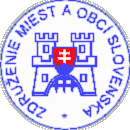
The first written notice is from the year 1113.
Zlaté Moravce is one of the seven district towns of the Nitra
region. The town is the center of upper Požitavie, which is from ¾ surrounded
by the Tribeč and Pohronský Inovec mountain ranges. It is spread on the surface
of 45,36 km² on the both banks of the river Žitava at the height from 170 to
714 m above sea level. Zlaté Moravce due to its location belongs among the most
warm places of Slovakia with the average temperature about 9,5 ˚ C. According
to the number of inhabitants it is a small town.
It is composed of the following
cadastral territories: Zlaté Moravce, Kňažice, Opatovce nad Žitavou, Prílepy
a Hoňovce.
Manor-house
cultural monument
Street: A. Hlinka square
It is a one store Baroque-Classicistic
building with two annexes. The building was rebuilt by the cardinal Krištof
Migazzi – a archbishop of Vienna in 1789. The branch of the Ponitrianske
múzeum (museum) with natural sciences and historically archeological sections
is placed in the building. There is a lot of material about the life of
a great poet of Štúr’s group Janko Kráľ, who had lived here since 1862
until his death in the year 1876. It serves as a seat of the Municipal
cultural center. There is theatrical hall, Municipal library and
ceremonial hall.
Je to jednoposchodová barokovo-klasicistická budova s dvoma krídlami. Budova bola prestavaná kardinálom Krištofom Migazzim, viedenským arcibiskupom v roku 1789.
V budove sa nachádza pobočka Ponitrianskeho múzea s dvoma oddeleniami: prírodovedným a historicko-archeologickým. Je tu sústredený i materiál o živote veľkého štúrovského básnika Janka Kráľa, ktorý tu žil od r. 1862 až do svojej smrti v r. 1876. Sídli tu Mestské kultúrne stredisko, je tu divadelná sála, mestská knižnica a obradná sieň. Na nádvorí je pomník Janka Kráľa postavený v r. 1962 akademickým sochárom Jánom Kulichom.
Mausoleum of the family Migazzi.
Type: cultural monument
Street: Prílepská street
It was built in the year 1887 in a Neo-Romanesque style. The Tekov county administrator Viliam
Migazzi had it built for his wife Antónia Marczibányi and himself. There is little park around the mausoleum. It is an exceptional park composition
of a specific verdure of cemeteries and urn groves. Overhanging kinds of
pine trees were planted by Viliam Migazzi between 1887 – 1896 with plants
originating from the park Sassouci by Postdam.
Roman Catholic church of the archangel holy Michael
Type: cultural monument
Street: A. Hlinka square
It belongs among most valuable and by its origin oldest monuments of town. It was
built in baroque-classicist style in place of an old gothic church from
the 1st middle of the 15th century. It has typical
one nave disposition with semicircle presbytery enclosing. It is
extended with sacristy from one side and oratorio from the other side. There is
a two story brick built choir in the back part of the church. Exterior of
the church with built-in tower was rebuilt in late Empire style.
The interior is decorated with presently restored precious pictures and
paintings.

|









